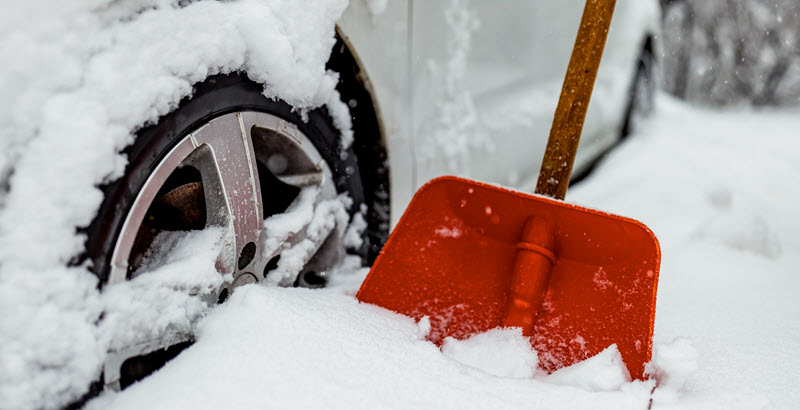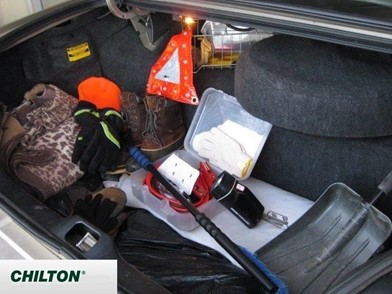| By Gale Staff |
Before you get stuck in the snow, here are some items to keep in your vehicle and some tips on how to get moving again from ChiltonLibrary.
First, some items to keep in your vehicle:
- Small or collapsible shovel
- Boots (if you don’t regularly wear them)
- Sturdy pair of gloves or mittens and a cap
- Sand or cat litter
Friends, family, and neighbors will have a lot of different options of how to get out of the snow when stuck. Here are nine simple reminders and tips:
- Make sure the tailpipe is clear of the snow before starting or running the engine.
- Look under the vehicle to identify if it is hung-up on snow that will need to be removed before being able to get free. If so, carefully remove the snow if possible. If there is too much or it is too far under the vehicle, call for a tow service.
- After removing snow, put some traction aid, in front of or behind the tires, depending on the direction chosen to free the vehicle. Gently rock the vehicle as described below or with the help of others. Remember to accelerate slowly.
If someone is placing something under the tires, like floor mats, make sure everyone is standing well clear of the vehicle before the driver puts the vehicle in gear. The items under the tires can become fast moving projectiles that can injure those around them. There are a number of products on the market that advertise better traction to get vehicles unstuck, just remember to make sure everyone is well clear of the vehicle if using one of them.
- Cat litter that is high in clay will probably melt into a slippery substance beneath the tires. Consider a litter that is low in clay or sand instead. Sand is probably the most ecologically friendly option.
- Place the bag of cat litter or the sand tubes in sturdy containers before putting them in the vehicle. Then if you need to use them for traction aid, the contents do not spread all over the inside of your vehicle or trunk.
- Secure the sand tubes or cat litter if they are placed inside the vehicle, such as in a van or SUV. These can become dangerous projectiles in an accident. In the bed of a truck, try to secure them over the driving axle.
- Do not rock the vehicle by switching from a forward gear to reverse and back again. This will overheat the engine and can lead to transmission failure. Instead, keep the vehicle in either reverse or drive, gently depress the accelerator to get the vehicle to slightly rock in the desired direction, then release the accelerator to let the vehicle come back to the original position. Do this again right away, repeating it until the vehicle rocks itself out of the rut and back onto the drivable surface.
- Once the tires start slipping, release the accelerator. Spinning the tires just makes the situation worse.
- Use the lowest gear possible and gently accelerate in order to get the best traction.
Winter Weather Must-Haves
- Even though many of us live in urban areas or rural areas that are traveled frequently, it is still a good idea to keep a sleeping bag or blanket in the vehicle during the winter in case it takes a while for help to arrive.
- Remember to travel with a well-charged cell phone, especially in the winter.
- Keep a bright flashlight available in the vehicle to use to help others see the stranded vehicle as well as to be able to look around the vehicle after dark. Flares or roadside assistance markers are also good to carry in the vehicle. Check the flashlight operation at least once a month, especially if the vehicle is not kept in a garage.
- Keep non-perishable food and water on hand. They will freeze in the coldest weather so replenish as needed.
Find more tips and tricks for every season in your ChiltonLibrary database!
Not a subscriber? Learn more about offering your patrons ChiltonLibrary for all their vehicle needs!


